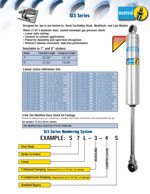Race Cars Are Dangerous!
This seems obvious to most, but it is absolutely amazing the number of racers who choose to ignore safety and for whatever reason choose not to use the most up to date advanced safety equipment that is available. Safety is the driver's responsibility. Most short tracks are accidents waiting to happen and in a lot of cases when something does present itself a lot of facilities lack the proper equipment and trained personnel to properly help you.
Another fact is most high speed professional tracks are much safer than your average short track. One is for the reason above. Professional facilities have better safety equipment, more of it, and trained personnel to deal with catastrophic incidents. At most short tracks there are many things you can hit and come to a dead stop almost instantly. At superspeedways there are very few things to hit that bring you to a dead stop. When you hit on a speedway, quite often you slide bouncing off soft walls, dissipating energy at every impact until you come to a stop. At most short tracks there are many things to hit that will bring you to a dead stop almost instantly. The abrupt stops are what causes head trauma. Remember Dale Earnhardt's hit, on impact it was just over 50 mph. A very unfortunate accident happened last week when a young teenager died in a hornet car from a frontal impact. The fact is the higher level of a race car, the safer they are. The lower classes of cars are the most dangerous as they typically lack proper safety gear and the drivers fail to where Neck Restraints.
If you race, and you don't wear a proper neck restraint, sit in a good seat with a proper head rest, you are asking for trouble. In this day and age with the advance of head restraint systems you should not sit in a race car without an advanced neck restraint system. There are only about three devices on the market that fit this category. A foam neck collar is not one of them.
Safety equipment is the most important part of your race car and your head is the most important part of your body... protect it properly. Think about this for a minute... you strap yourself in the car, buy all the good safety equipment, and then you don't do anything to restrain your head???? Does this make sense?
If you can't afford the proper safety gear... at any level... you shouldn't be racing. Please protect yourself when in a race car.
Spring and Shock Info
A few notes about spring rating
It is highly recommended that all springs and shocks are rated before being put into service. The advantage of this is, you can establish a baseline so that after an accident, or if your car simply isn’t handling you can recheck your shocks or springs to see if they are the same or if something has changed.
If everything is the same then you can look elsewhere to find your handling problems.
Rear ends and straightening
Having a straight rear end housing is very important to the overall handing of your race car. Just as you carefully align your front end so the wheels are pointing in the right direction, the same needs to be done with the rear housing. I would venture to bet that most race cars have a bent rear end housing. The reason for this is most people have no way of accurately checking. When purchasing a new rear end racers naturaly assume that it is straight. Think again! Even if straight when purchased, it will probably bend when you weld or tack weld the brackets to it.

